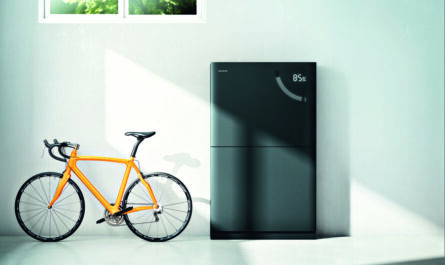 How Atmospheric Water Generators Work
How Atmospheric Water Generators Work
AWGs are devices that extract water from humid ambient air. They work on the principle of condensation – as air passes through the system, its temperature is reduced below the dew point. This causes the water vapor in the air to condense out into liquid water droplets.
There are a few different technologies used in AWGs. Desiccant-based systems use materials like silica gel that attract and capture water molecules from the air. The desiccant is then heated to release the captured water. Compressor-based systems compress air and lower its temperature, causing condensation. Air is passed over coils filled with cold water or another coolant to extract the water vapor. Finally, some systems use evaporative cooling, blowing air over wet membranes or other surfaces to lower the air temperature through evaporation. Regardless of the specific approach, the goal is the same – to extract the maximum amount of potable water from ambient air.
Once the water is condensed out, it goes through multiple purification processes before being collected. Filters and ultraviolet treatment remove impurities and microorganisms to make the water safe for drinking. The purified water is then stored in an attached reservoir for use. Output capacities for home and commercial AWGs range from a few liters per day to hundreds of liters, depending on the size of the unit and prevailing atmospheric conditions.
Meeting Growing Water Needs Through Innovation
Access to clean water is under threat worldwide as demand increases and climate change impacts existing sources like rivers, lakes, and groundwater reserves. By 2030, it is projected that 40% of the global population will be living in areas experiencing water scarcity. Many areas already suffer seasonal or periodic shortages. Traditional methods of water production and distribution are under immense strain. There is an urgent need for sustainable new approaches to augment supplies.
Atmospheric water generation has the potential to help address pressing water security challenges in a localized, distributed manner. By tapping into the abundant water reservoir in the air around us, AWGs can produce potable water independent of traditional infrastructure where it is needed most. They allow water to be generated on-site without large-scale transportation or storage requirements. This makes them well-suited for off-grid, hard-to-access, or disaster relief applications. Their decentralized model based on small modular units is also more resilient and less vulnerable than vast centralized water systems.
AWGs offer a cost-effective and environmentally-friendly complement to conventional water sources. There are no issues with depleting aquifers or polluting water bodies. The only inputs required are air and a source of energy to power the system. AWGs can run on grid electricity, solar panels, or even human or animal power in some off-grid designs. They leave no carbon footprint and do not contribute to rising sea levels as there is no net removal of water from the hydrological cycle. Unlike desalination, which produces highly saline brine waste, AWGs generate only pure water. Overall, atmospheric water generation provides a sustainable path to expanding the global freshwater supply.
Current Applications and Ongoing Advancements
Several militaries and space agencies have been utilizing atmospheric water generation for decades now for their deployed bases and spacecraft life support systems. Its ability to produce water independently where no source exists made it indispensable for these off-grid applications. However, the technology has only recently started achieving widespread adoption in other sectors as well.
Today, AWGs are being used in remote villages, coastal settlements, islands, mountainous regions, desert areas and more to provide drinking water when conventional sources are unavailable or unreliable. Schools, hospitals, office parks and farms are installing units for their daily water needs. During natural disasters like floods, droughts or earthquakes when local water supplies are disrupted, AWGs prove invaluable for relief efforts by NGOs and aid organizations. Off-grid homes, RVs, boats and other mobile setups also employ atmospheric water harvesters.
The technology continues improving rapidly through innovative engineering. New desiccant materials with greater adsorption abilities are being developed. New compact condenser designs and heat transfer surfaces increase collection efficiencies. Advanced water purification techniques like activated carbon filtration are yielding much cleaner outputs. Solar-powered and transportable mini-AWG devices offer true portability. IoT integration enables remote monitoring and status updates. As costs go down through mass production and the technology matures further, its potential for transforming the global freshwater landscape will only multiply.
Future Prospects and Concerns
Looking ahead, atmospheric water generation is poised to become a mainstream solution integrated into the water supply mix worldwide. Its suitability for both decentralized community-level use as well as integration into broader municipal water systems means it can scale up to augment supply even in large metro areas. Projections indicate the global AWG market will grow at over 10% annually to surpass $1 billion by 2030.
Of course, AWGs are not a magic bullet and certain limitations do exist. Their water production rates depend heavily on ambient air temperature and relative humidity levels, restricting output in very hot and dry environments. Energy consumption also scales up at lower humidities to condense the same amount of water. Additional purification may still be needed in heavily polluted airsheds.
Proper AWGs siting plays a crucial role in maximizing yields and optimizing the business case. However, if designed and deployed judiciously based on local climate profiles, AWGs offer a competitive water source even in moderately humid regions. Ongoing energy and materials research could potentially address some constraints too. With further cost reductions through mass manufacturing and economies of scale, atmospheric water is on track to emerge as a mainstream water supply augmentation approach by this decade. It has immense potential to help resolve water accessibility shortfalls while reducing pressures on existing natural sources. If scaled ambitiously through cooperative global efforts, it could go a long way in solving the looming water crisis of the 21st century.
*Note:
1. Source: Coherent Market Insights, Public sources, Desk research
2. We have leveraged AI tools to mine information and compile it


